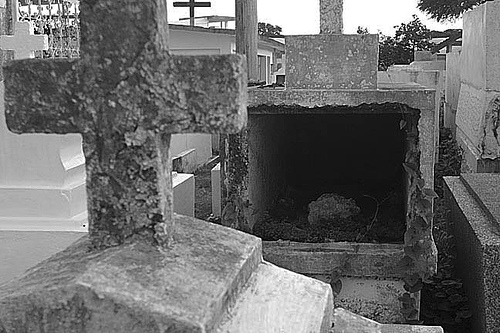We run our website the way we wished the whole internet worked: we provide high quality original content with no ads. We are funded solely by your direct support. Please consider supporting this project.

Rethinking the Resurrection
As much as every other aspect of Jesus life and ministry, I submit that the resurrection must be understood in light of the cross. This event was not anything like the resuscitation of a random corpse. It was the resurrection of the Incarnate Son of God who had fulfilled the human side of the God-human covenant by living a sinless life and who, as an unsurpassable expression of divine love, came to enter into the deepest darkness of evil and assume that evil upon himself. Understood as such, the resurrection can only be viewed as God’s vindication of the self-sacrificial life and death of this God-man through whom God’s eternal character was made known.
For this reason the resurrection must not be interpreted as a display of triumphalist power that contrasts with the humble, cruciform, character of God revealed on the cross as well as throughout Jesus’ life ministry. It was rather a display of power that confirmed that the cross is in fact the revelation of God’s true character and that God’s enemy-loving, non-violent, self-sacrificial way of responding to evil is in fact victorious.
For this reason, the One who sits on the throne in the Book of Revelation and who alone is worthy to open the scroll of God’s plan for history is the victorious lamb who was “slaughtered” (Rev. 4-5; 21:22l 22: 1,4). And for this reason those who conquer are depicted as doing so because they “follow the Lamb wherever he goes” (Rev. 14: 4), bearing witness to his victory and imitating his sacrificial death (Rev. 12:11).
Moreover, throughout Revelation we find the emphatic declaration that the glorified and victorious Jesus is one and the same as the crucified Jesus (see Rev. 5:6, 9, 12; 7:14, 17; 12:11; 13:8; 17:14).
Along the same lines, we can see that the resurrection of Jesus confirmed rather than sat aside the cruciform nature of his life and death in the very fact that for Paul, as much as for John who wrote Revelation, the “glorified” Lord is one and the same as the crucified Lord (2 Cor. 4:4-6; Phil 2:6-11). This is precisely why all who have been raised with Christ and who therefore participate in his resurrected life reflect their participation by taking on a cruciform character that leads them to sacrificially serve others, including their enemies, just as Jesus did.
The same point is made by noting that for Paul, the Spirit that dwells within believers is the Spirit of the crucified Christ that empowers them to live according to “the law of Christ” (Gal 6:2), which is to love others as he loved us “when he gave his life for [us]” (Eph. 5:1-2).
Ernst Käsemann once stated that the cross is “the signature of the one who is risen.” The surest sign that anyone belongs to him is that they participate is Christ’s risen life, which means they participate in the expression of his self-sacrificial love.
Image by Keith Bacongco via Flickr.
Category: General
Tags: Cross, Cruciform Theology, Jesus, Resurrection, Revelation
Topics: Christology
Related Reading

The Problem with Christocentrism
As we’ve discussed in the previous posts, there has been a growing move toward a Christocentric orientation in theology since Barth, and especially over the last fifty years. I enthusiastically applaud this trend, for I’m persuaded it reflects the orientation of the NT itself, so far as it goes. The trouble is, it seems to…

Was Jesus Really Human Like the Rest of Us?
Did Jesus really live as a human like you and I do? Or did he walk around with special divine powers that we don’t have? In the previous post, I introduced the question: How was God both fully God and fully man? I explained the classical model of the Incarnation which views the incarnate Jesus…

A Coming Storm
There is a storm beginning to brew on the horizon. It is a debate among Evangelicals about the violent depictions of God, stirred up largely by Eric Seibert’s Disturbing Divine Behavior. Here is a post that sounds “the clarion call.” The debate is presently around two options. Option #1: Traditionalists argue we must simply embrace…

Podcast: Why Did Jesus Say He Came to Bring a Sword?
Greg considers what Jesus meant when he said he had come to bring a sword. http://traffic.libsyn.com/askgregboyd/Episode_0312.mp3

Podcast: If the Cross is the FULL Revelation of God, Why Do We Even Need All the Rest?
Greg discusses the summation of the Bible in the crucifixion. http://traffic.libsyn.com/askgregboyd/Episode_0285.mp3

How is the Bible “God-Breathed”?
The historic-orthodox church has always confessed that all canonical writings are “God-breathed” (1 Tim 3:16). But what exactly does this mean? How could God guarantee that the writings that his “breathing” produces are precisely what he intended without thereby undermining the autonomy of the agents he “breathes” through? In other words, did God breathe the…
